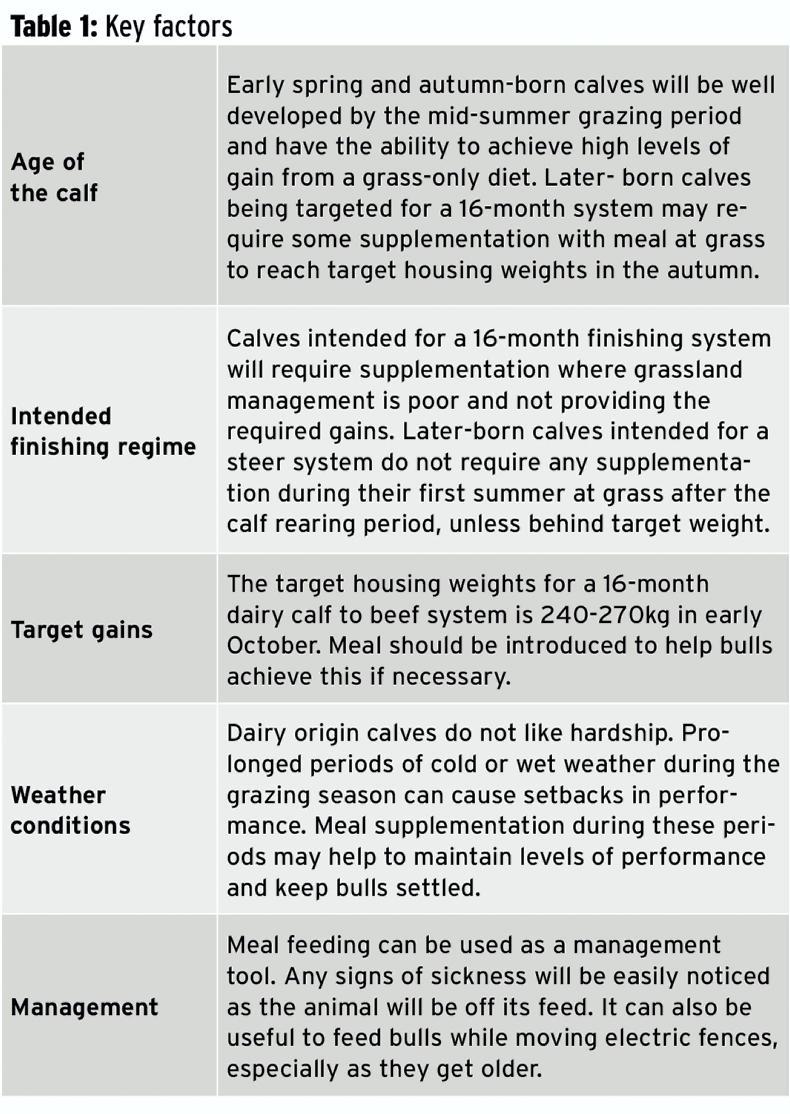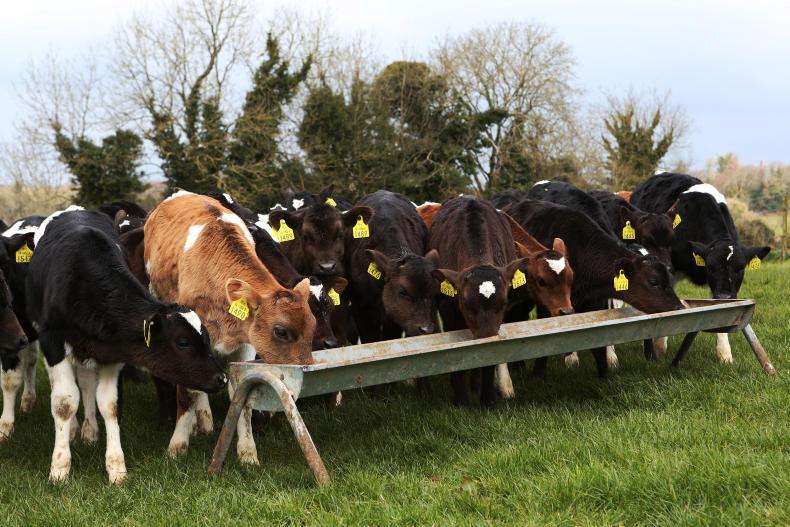The focus of any good grassland management system is to maximise the gain achieved from grass. In a dairy calf-to-beef system good grassland management has the potential to deliver liveweight gains in the region of 1kg/day throughout the grazing season.
These high levels of weight gain can be achieved through the adoption of a rotational paddock grazing system where there is close attention paid to achieving the correct pre- and post-grazing heights.
This will allow easier management of grass throughout the grazing season and promote high levels of grass digestibility and utilisation.
The following are a set of guidelines when it comes to considering extra supplementation.
Spring
When the calves first go to grass, concentrate supplementation will ensure that their DM intake is high enough to promote high levels of growth until they are well enough developed to fully utilise grass.
Calves should be eating 1kg to 2kg of meal prior to weaning and meal feeding should continue for at least four weeks after weaning.
Summer
In a well-managed grassland system, the merits of feeding expensive concentrates during the mid-summer grazing period are questionable if high levels of grass digestibility and utilisation can be achieved.
The decision on whether or not to feed meal during the summer months is complex as it is influenced by a variety of factors.
Autumn
Unsettled or wet weather can have a severe impact on bull performance, particularly in autumn.
In order to maintain bull performance in the autumn, meal should be included in the diet during poor or unsettled weather.
Many farms will continue to feed 1kg of concentrates at grass throughout the summer, which allows them to increase the feeding rate with ease.
Where no meal has been fed, it should be gradually introduced from approximately four weeks prior to the proposed housing date.

How to successfully wean a dairy calf
Managing dairy-to-beef calves at grass
The focus of any good grassland management system is to maximise the gain achieved from grass. In a dairy calf-to-beef system good grassland management has the potential to deliver liveweight gains in the region of 1kg/day throughout the grazing season.
These high levels of weight gain can be achieved through the adoption of a rotational paddock grazing system where there is close attention paid to achieving the correct pre- and post-grazing heights.
This will allow easier management of grass throughout the grazing season and promote high levels of grass digestibility and utilisation.
The following are a set of guidelines when it comes to considering extra supplementation.
Spring
When the calves first go to grass, concentrate supplementation will ensure that their DM intake is high enough to promote high levels of growth until they are well enough developed to fully utilise grass.
Calves should be eating 1kg to 2kg of meal prior to weaning and meal feeding should continue for at least four weeks after weaning.
Summer
In a well-managed grassland system, the merits of feeding expensive concentrates during the mid-summer grazing period are questionable if high levels of grass digestibility and utilisation can be achieved.
The decision on whether or not to feed meal during the summer months is complex as it is influenced by a variety of factors.
Autumn
Unsettled or wet weather can have a severe impact on bull performance, particularly in autumn.
In order to maintain bull performance in the autumn, meal should be included in the diet during poor or unsettled weather.
Many farms will continue to feed 1kg of concentrates at grass throughout the summer, which allows them to increase the feeding rate with ease.
Where no meal has been fed, it should be gradually introduced from approximately four weeks prior to the proposed housing date.

How to successfully wean a dairy calf
Managing dairy-to-beef calves at grass







 This is a subscriber-only article
This is a subscriber-only article










SHARING OPTIONS: